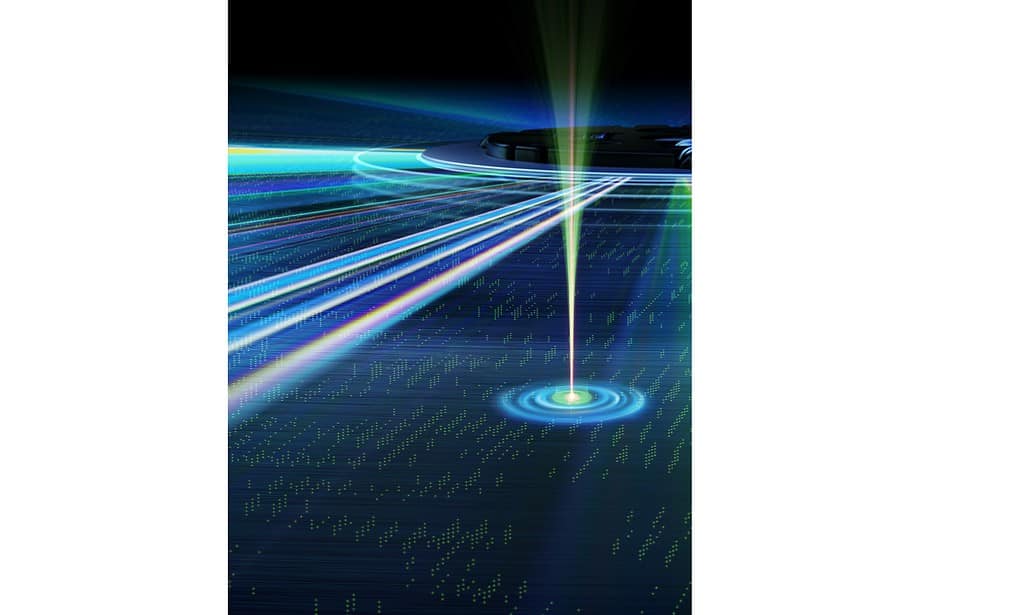
In ancient times, during the early 2000s, my friends and I would share stuff on our computers using CDs and a bit later the mighty DVDs, which could store as much seven times more data. We had a good run, but it didn’t take too long for these to be replaced by flash drives and external HDDs. Like the magnetic cassette and the floppy disk before them, optical discs became obsolete, relegated to collector’s items on people’s living room shelves.
However, optical discs may be about to make a strong comeback.
Researchers led by Professor Min Gu of the University of Shanghai for Science and Technology (USST), in collaboration with the Shanghai Institute of Optics and Fine Mechanics, Chinese Academy of Sciences, reported overcoming the optical diffraction limit. In doing so, they reportedly devised a 3D nanoscale optical disk memory system capable of reaching petabit (Pb) capacity.
To put this into perspective, the storage capacity of a DVD-sized disc could now rival that of at least 10,000 Blu-ray discs or 100 high-capacity hard drives.
Are optical disks back in fashion?
The optical diffraction limit refers to a fundamental boundary imposed by the wave nature of light. In other words, this limit describes the smallest feature size that an optical imaging system can resolve. In the context of storing data, it means there’s a limit to how small we can make the “dots” (or bits) of data on a storage medium using light, which in turn limits how much data we can fit into a given space.
The researchers were able to overcome this limitation using a sophisticated dual-laser technique. This technique involves the simultaneous use of a femtosecond laser pulse, which is shaped like a donut, along with a secondary laser beam. The second beam acts to inhibit the fluorescence of a specially designed photoresist material except at the very center of the doughnut shape. It builds upon the dual-beam super-resolution microscopy pioneered by German scientist Professor Stefan W. Hell, who was awarded the 2014 Nobel Prize in Chemistry.
The novel disk utilizes a special film known as AIE-DDPR. It’s composed of molecules that absorb photons (photoinitiators) as well as highly photosensitive molecules to capture written data at the nanoscale.
Using this technique, the researchers in China were able to produce exceedingly small data marks, significantly smaller than what the diffraction limit would normally allow, thereby enhancing the storage density.
“Optical data storage (ODS) presents a promising solution for cost-effective long-term archival data storage. Nonetheless, ODS has been limited by its low capacity and the challenge of increasing its areal density 4,5. Here, to address these issues, we increase the capacity of ODS to the petabit level by extending the planar recording architecture to three dimensions with hundreds of layers, meanwhile breaking the optical diffraction limit barrier of the recorded spots,” the researchers wrote.
Impressive potential
During a proof-of-concept test, the researchers used this laser setup on a film of AIE-DDPR just 54 nanometers across to record data in 3D over 100 layers separated by a distance of one micrometer. In contrast, traditional DVDs can only store data on the surface layer of the disc, which is why this optical memory device can hold gargantuan amounts of data.
This innovation not only shatters previous limitations but may also usher in a new era of data storage. DVDs are very cheap and durable, but their poor data density relative to today’s needs made them obsolete quite fast. It now looks like this familiar storage medium could be due for a comeback.
Potential applications range from vast digital archives to the comprehensive storage of ever-growing datasets powering technologies like ChatGPT, which includes 5.8 billion indexed web pages and the text size of the entire internet, approximately 56 Pb. Traditional storage would need an area as large as a playground stacked to the brim with hard drives, but this innovative optical disk memory condenses that space to the size of a desktop computer, significantly cutting costs.
The significance of this development extends beyond sheer capacity. In a world grappling with the environmental impact of digital infrastructure, the three-dimensional nanoscale optical disk memory presents a more sustainable alternative. Traditional data centers, with their gargantuan appetite for energy, represent a significant sustainability challenge. In 2022, China’s data centers consumed about 270 billion kilowatt-hours of power, surpassing two times the output of the Three Gorges hydropower station.
A major concern has also been the necessity for regular data migration every 3-10 years to avoid data tampering and loss, which also limits data lifespan. In contrast, the energy consumption of the nanoscale optical disk memory is much lower, and its lifespan extends to 50-100 years.
Advances and challenges
However, despite its huge potential, there are many practical challenges to implementing this technology at an industrial scale. While the researchers have made significant strides in increasing the areal density of storage, there is a pressing need to enhance both the writing speed and the energy efficiency of the system. This could potentially be achieved by employing a femtosecond laser beam with a higher repetition rate and utilizing a more sensitive photoresist material than those currently in use.
Despite these challenges, the researchers have demonstrated a significant leap forward in data storage technology, achieving a storage capacity of 1.6 petabits within a DVD-sized disk area. This breakthrough suggests a promising path forward for meeting the vast data storage requirements of the big data era. In fact, Professor Gu and colleagues would like to keep pushing the limits towards the exascale (over x1,000 Petabits).
“This technology makes it possible to achieve exabit-level storage by stacking nanoscale disks into arrays, which is essential in big data centers with limited space,” the researchers wrote.
The findings appeared in the journal Nature.









